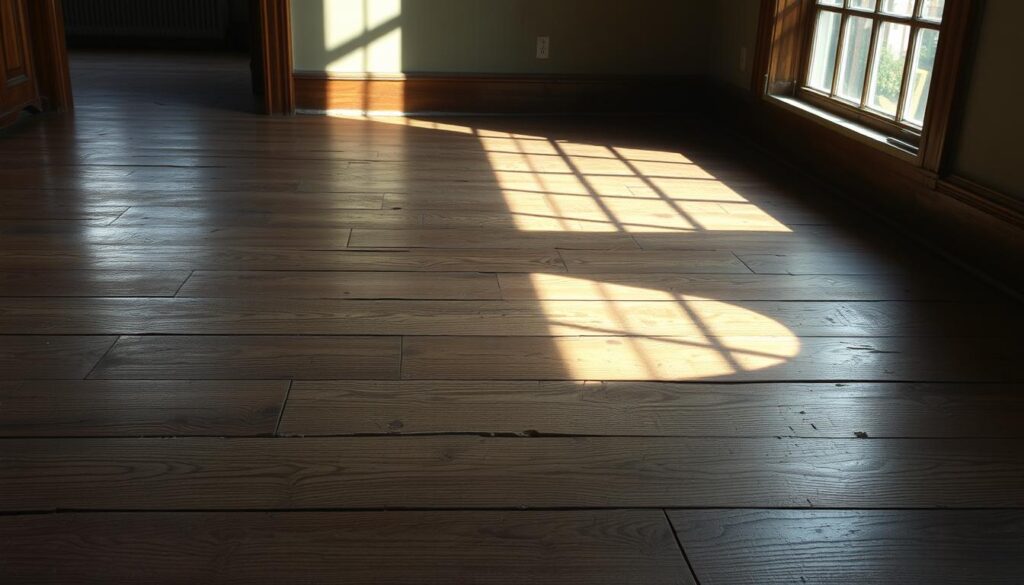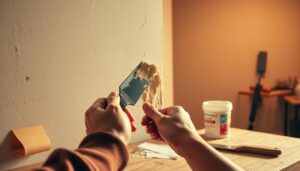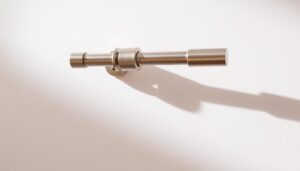Have you ever walked into a room and been greeted by the ominous creak of a floorboard? It’s a familiar soundtrack in many homes, adding an unintended layer of suspense. But what causes this noise, and more importantly, how can you stop it?
Laminate flooring, known for its durability and aesthetic appeal, is not immune to this issue. The creaking can be attributed to various factors, including the stability of the underlayment and environmental moisture levels. Understanding the root cause is crucial to silencing your floor.
By identifying the source of the creak and applying the right solution, you can restore peace and quiet to your home. In this guide, we’ll explore the common causes of creaking laminate flooring and provide practical steps to address the issue.
Key Takeaways
- Identify the source of the creak to apply the right solution.
- Understand how environmental factors contribute to the noise.
- Learn practical steps to silence your laminate flooring.
- Discover the importance of underlayment stability.
- Explore the role of moisture in causing creaks.
Understanding Why Your Laminate Flooring Squeaks
The annoying squeak of laminate flooring is a widespread complaint among homeowners. Squeaky laminate flooring is fundamentally a physics problem involving friction and movement between components. The noise occurs when two surfaces rub against each other due to improper installation or environmental changes.
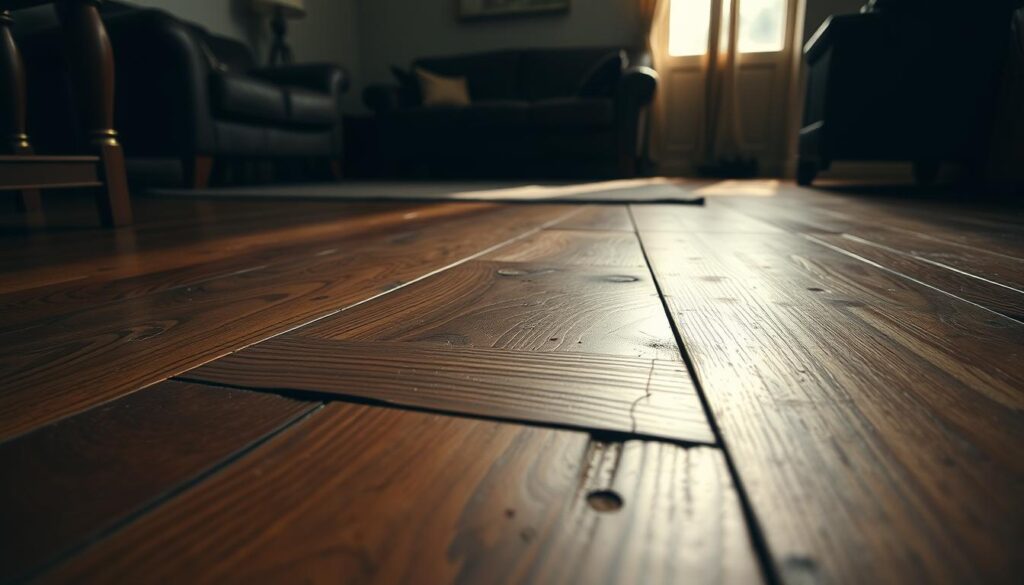
The Science Behind the Squeaks
The science behind squeaky laminate flooring lies in the interaction between the flooring material and its foundation. When laminate planks aren’t properly locked together or when the subfloor beneath isn’t completely level, the resulting gaps and movement create the perfect conditions for squeaking. Seasonal changes in temperature and humidity can cause laminate flooring to expand and contract, potentially creating new pressure points and squeaks even in properly installed floors.
How Laminate Flooring Is Designed to Work
Laminate flooring is designed as a floating floor system that should expand and contract with temperature and humidity changes. The multi-layer construction of laminate flooring plays a crucial role in how it responds to pressure and environmental conditions. Understanding the relationship between your laminate flooring and the subfloor is essential, as many squeaks originate from the interaction between these two surfaces rather than from the laminate itself.
As stated by flooring experts, “A well-installed laminate floor should be quiet and stable.” Proper installation and maintenance are key to preventing squeaks. By understanding how laminate flooring works and the factors that contribute to squeaking, you can take steps to address the issue and enjoy a quieter home.
Common Causes of Squeaky Laminate Flooring
If your laminate floor is squeaking, it’s likely due to one of several common issues that can be easily addressed. Understanding these causes is crucial to fixing the problem effectively.
Uneven Subfloor Issues
An uneven subfloor is often the primary culprit behind creaking laminate flooring. When the subfloor isn’t level, laminate planks may move incorrectly, causing friction and resulting squeaks. Uneven subfloors create voids beneath your laminate flooring that allow for movement and flexing when walked upon.
Excessive Moisture and Humidity Problems
Moisture and humidity fluctuations cause laminate planks to expand and contract, creating pressure points where boards rub against each other or against the subfloor. This issue is particularly problematic in areas like bathrooms, kitchens, and basements.
Poor Installation Techniques
Poor installation techniques, such as inadequate acclimation of materials or insufficient expansion gaps around the perimeter, can lead to stress points that manifest as squeaks over time. Ensuring proper installation is key to avoiding these issues.
Lack of Proper Underlay
The underlay provides crucial cushioning and moisture protection. A lack of proper underlay or using low-quality materials can lead to increased friction between the laminate and subfloor, resulting in squeaks.
By understanding these common causes, you can take the first step towards fixing your squeaky laminate flooring and ensuring a quieter, more comfortable home.
How to Identify the Source of Squeaks in Your Laminate Floor
The key to resolving squeaky laminate flooring lies in understanding where the squeak is coming from. To effectively address the issue, you need to identify the source of the noise.
Walking Test Method
One effective way to locate squeaks is by using the walking test method. This involves systematically walking across your laminate floor in different directions while listening carefully for squeaks. Mark the problematic areas with painter’s tape for later treatment.
Visual Inspection Techniques
Conducting a visual inspection is also crucial. Get down to floor level with good lighting to look for gaps between planks, uneven areas, or signs of moisture damage that might be contributing to the squeaking problem.
Tools to Help Locate Squeaky Areas
Specialized tools like a stethoscope or electronic stud finder can help pinpoint the exact location of squeaks by detecting movement or vibrations. Testing the floor at different times of day can also reveal temperature-related squeaks.
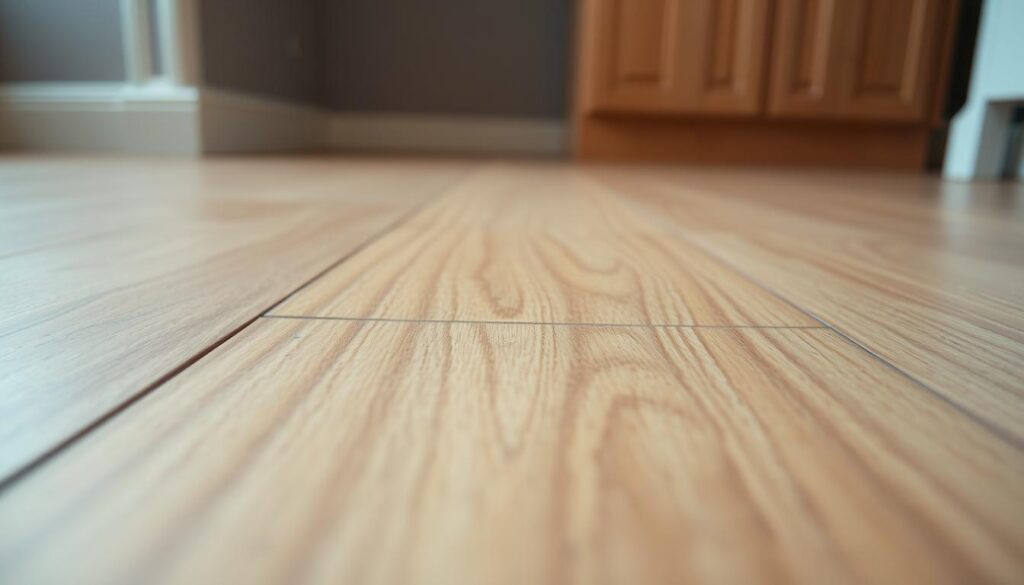
It’s essential to identify whether the squeak originates from the laminate itself or the subfloor beneath. Documenting all squeaky areas on a simple floor plan can help visualize patterns and plan your repair strategy more effectively.
Quick and Temporary Solutions for Squeaky Laminate Floors
Dealing with a squeaky laminate floor can be frustrating, yet there are straightforward temporary fixes. Squeaky laminate floors can disrupt the peace in your home, but fortunately, there are simple and effective temporary solutions to address this issue.
Using Talcum Powder to Reduce Friction
Talcum powder is an effective temporary solution for squeaky laminate floors. By sprinkling it along the seams where squeaking occurs and working it into the joints with a soft brush, you can significantly reduce friction between the laminate planks. This method is simple and provides immediate relief, although it may need to be reapplied periodically.
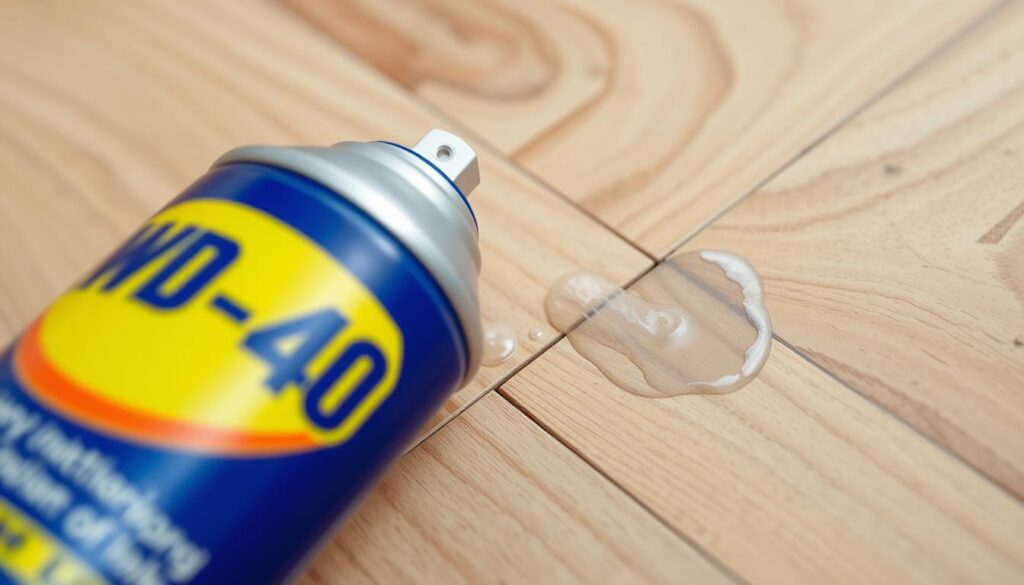
Lubricating Floor Joints with WD-40 or PTFE Spray
For a potentially longer-lasting solution, consider using a fluid lubricant like WD-40 or PTFE spray. These products can be applied directly into the joints using the thin straw attachment that comes with the spray cans, ensuring precision and minimizing the risk of getting lubricant on the surface of your laminate. Always test any lubricant on an inconspicuous area first to ensure it won’t cause damage.
When to Choose Temporary vs. Permanent Fixes
Temporary solutions are particularly useful for rental properties, newly installed floors that are still settling, or when planning a more comprehensive renovation. For squeaks that occur seasonally due to changes in humidity, temporary fixes might be sufficient until environmental conditions stabilise. However, for high-traffic areas or persistent squeaks, considering a more permanent solution may be necessary.
It’s also crucial to consider the underlying cause of the squeak. While lubricants can reduce noise, they don’t address structural issues that may worsen over time if left unattended. Therefore, assessing the situation and choosing the most appropriate solution based on the location and cause of the squeak is essential.
How to Fix Squeaky Laminate Flooring Permanently
You can eliminate squeaks in your laminate flooring with the right permanent fixes. Squeaky laminate flooring can be a persistent problem, but there are effective solutions to address the issue.
Applying Construction Adhesive to Secure Loose Boards
For a more steadfast approach, construction adhesive can be employed to stabilize joints that persistently separate. By pushing construction adhesive into the joints, you can bond the planks together, minimizing their movement and the resulting noise.
It’s essential to avoid using nails or screws as these may introduce new problems. Instead, a small amount of construction adhesive with a putty knife can provide a longer-lasting solution compared to talcum powder.
Installing Expansion Strips for Better Movement
Expansion strips can be installed around the perimeter of your room to provide adequate space for natural expansion and contraction of the laminate flooring with seasonal temperature and humidity changes.
Proper installation involves removing baseboards, cutting the laminate to create the recommended 8-10mm gap around the perimeter, installing the strips, and then replacing the baseboards.
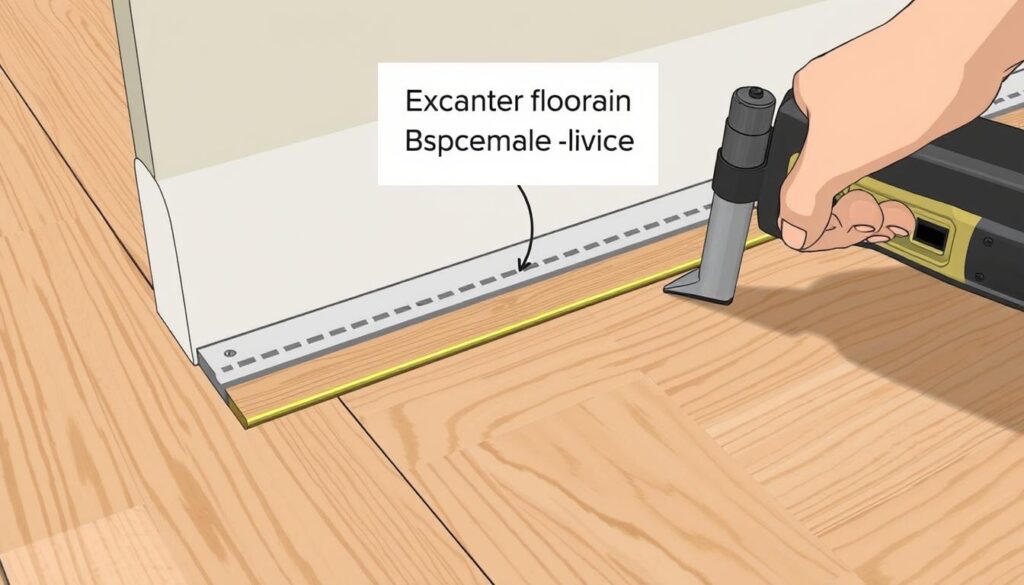
Using Fix-A-Floor Adhesive for Gap Filling
Fix-A-Floor adhesive is specifically designed for squeaky floors and works by penetrating through the laminate into the subfloor, creating a flexible bond that allows for natural movement while preventing the friction that causes squeaks.
The application process involves drilling small holes in the laminate at the squeak points, injecting the adhesive, and then placing weights on the area for 24 hours while the adhesive cures.
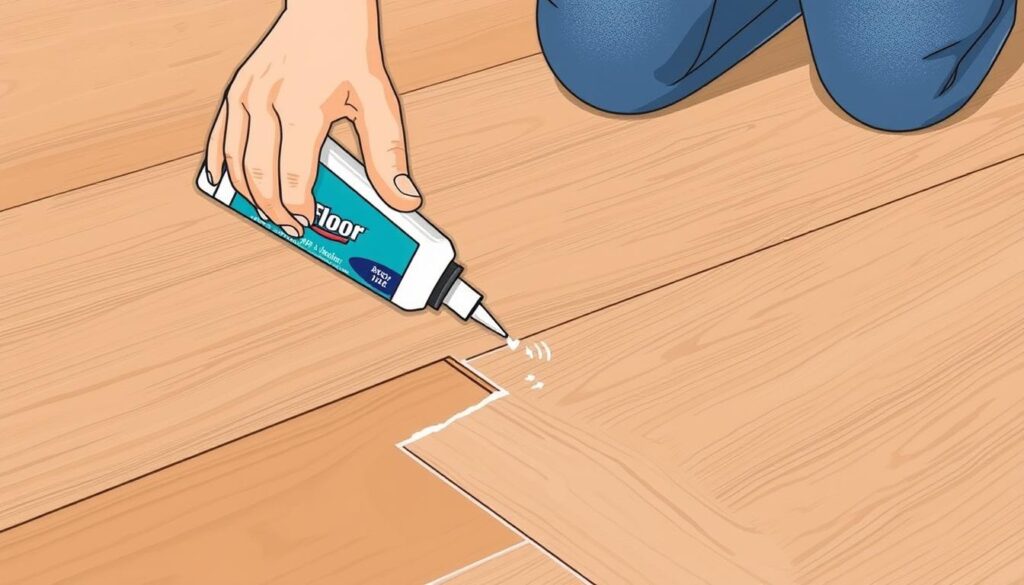
Unlike temporary solutions, permanent fixes address the root cause of the squeaking by stabilizing the floor structure and preventing future movement, making them more cost-effective in the long run.
When working with adhesives, always follow manufacturer instructions regarding curing times, application methods, and safety precautions to ensure optimal results and durability of your repair.
Preventing Future Squeaks in Your Laminate Flooring
Ensuring your laminate floor remains squeak-free involves a combination of proper installation, suitable underlay, and controlled environmental conditions. By addressing these factors, you can significantly reduce the likelihood of squeaks developing over time.
Proper Installation Techniques
Proper installation is crucial for preventing squeaks in laminate flooring. This includes thoroughly cleaning and levelling the subfloor, allowing laminate materials to acclimate to room conditions for at least 48 hours, and following manufacturer guidelines for expansion gaps. Ensuring planks are properly clicked together with no gaps or high spots is also vital.
Choosing the Right Underlay
Choosing the right underlay is crucial for long-term floor stability. Opt for high-density, moisture-resistant options that provide both sound insulation and a smooth, supportive surface for your laminate. Different rooms may require different types of underlay; for example, concrete subfloors need moisture barriers, while wooden subfloors benefit from sound-dampening properties.
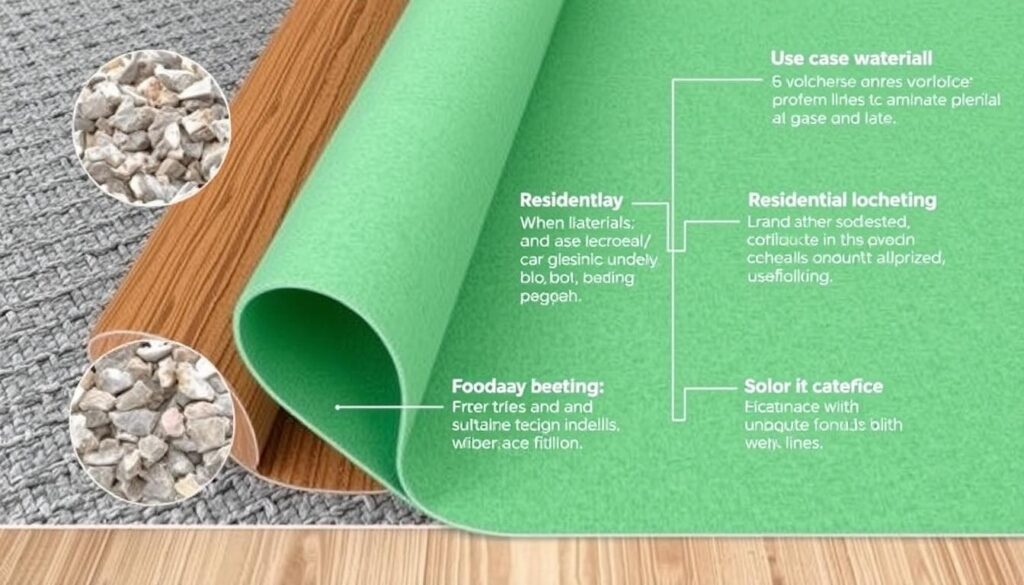
Monitoring and Controlling Room Humidity
Monitoring and controlling room humidity between 30-50% using dehumidifiers in summer and humidifiers in winter can prevent the expansion and contraction cycle that leads to squeaking. Installing a hygrometer in rooms with laminate flooring helps track humidity levels and address changes before they cause problems.
Regular Maintenance Practices
Regular maintenance practices should include prompt cleaning of spills, using appropriate laminate floor cleaners that don’t leave residue, and avoiding excessive water which can seep into joints. Periodically checking for and tightening any loose transition strips or moldings around the perimeter of the room can also contribute to reducing floor movement and subsequent squeaking.
By following these guidelines, you can enjoy a squeak-free laminate floor for years to come. Regular inspections and maintenance are key to extending the lifespan of your flooring and preventing issues before they arise.
Conclusion
With the knowledge gained from this guide, you’re now equipped to tackle the issue of squeaky laminate flooring head-on. By understanding the causes of laminate floor creaks and implementing preventative measures, such as proper installation and humidity control, you can reduce or eliminate creaking sounds altogether.
The DIY solutions mentioned, including lubricating floor joints and using Fix-A-Floor Bonding Adhesive, offer practical ways to enjoy a silent and comfortable living space. Regular maintenance and preventative measures can significantly extend the quiet lifespan of your laminate flooring. Whether you opt for temporary solutions like talcum powder or permanent fixes like construction adhesive, fixing squeaky laminate flooring is achievable with the right approach.
By investing time and effort into addressing the issue, you can transform your noisy laminate flooring into a quiet, comfortable surface, enhancing your home’s comfort and value. With the right techniques and a bit of patience, you can enjoy a peaceful, noise-free home environment.
